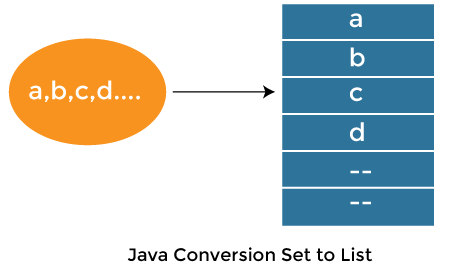

Java provides a special syntax of for loop (also called for-each loop) to process arrays and iterable collections. But, if you like to make the Stack a usual collection where you can iterate through the stack items, you should implement Iterable and Iterator interfaces as part of your LinkedStack implementation. Iterating through Stack Items - Stack Iteratorīy definition of stack data structure you would use it as a container where items are added to and removed from one end. IsEmpty(): Returns true if stack is empty, false otherwise. Size(): Return the number of objects the stack contains right now. In addition to push() and pop() methods we can also define a few supporting but optional methods, such as, Pop(): Return the top object from the stack, and remove as well. The following methods we plan to implement as part of our stack implementation in Java using linked list.

However, in linked implementation of stack we don't exactly require the top pointer because we will add an item at the beginning of the list and remove it from the beginning of the list.Ī stack by definition supports two methods, one is push for adding objects to the stack, and second, pop for removing the latest added object from the stack. To insert objects into and remove from stack a pointer usually called top is maintained that points to last inserted item. A stack is a container to which objects are added and removed by following last-in-first-out strategy. Linked list implementation of stack is efficient than array implementation because it does not reserve memory in advance. This article demonstrates a linked list implementation of generic stack. Iterating through Stack Items - Stack Iterator.Same way we can do it with other Collection implementations.
#Java list how to#
We have seen, how to get Java Stream of Multiple Lists using Java 8 Stream API (Stream interface) with an example. IntegerStream.forEach(System.out::println) //Print all elements of sub lists: odd, even and armstrongNo Output 1 //odd list elements flatMap(Collection::stream) //Here, All current stream elements mapped to stream

Stream integerStream = listOfList.stream() See following example for how to combine List of List using the flatMap() method. Here, the output is the same as the previous example, both implementation behaves the same.

ResultStream.forEach(System.out::println) Output Here, resultStream contains all elements of odd followed by elements of even Stream resultStream = Stream.of(odd, even) // Stream.of() accept one or more list as a argument See the following example for how to merge two collections using the flatMap() method. The flatMap() applies the given mapping function to each element of collection stream and returns a new Stream of result elements of applied given mapping function. Stream finalStream = ncat(firstStream, armstrongNo.stream()) //Merge fisrtStream and stream of armstrongNoįinalStream.forEach(System.out::println) Output 1 //odd list elementsģ71 Example 2: Using the Stream.flatMap() Method Stream firstStream = ncat(odd.stream(), even.stream()) //Merge stream of odd and even list See the following example for how to combine a stream of three list using two times concat() method. If you want to combine/merge more than two list, need to call concat() method one time less than a number of lists. ResultStream.forEach(System.out::println) Output 1 //odd list elements Stream resultStream = ncat(odd.stream(), even.stream()) //Concatenate stream of odd with stream of even Let’s see example for how to combine two integer type list stream into new one integer type stream list using the concat() method. ncat() is a static method, it combines two given streams into one logical stream of all elements of the first list followed by all elements of the second list. So, this article is going to show you how to get Java Stream of Multiple Lists using Java 8 Stream API (Stream interface) with an example. But what if we want a stream of two List or stream of List of Lists as a single logical stream to combine/merge those lists as one or do the same process on all. In Java 8, we know how to get a stream of List using stream() or parrallelStream() method of Collection interface.


 0 kommentar(er)
0 kommentar(er)
